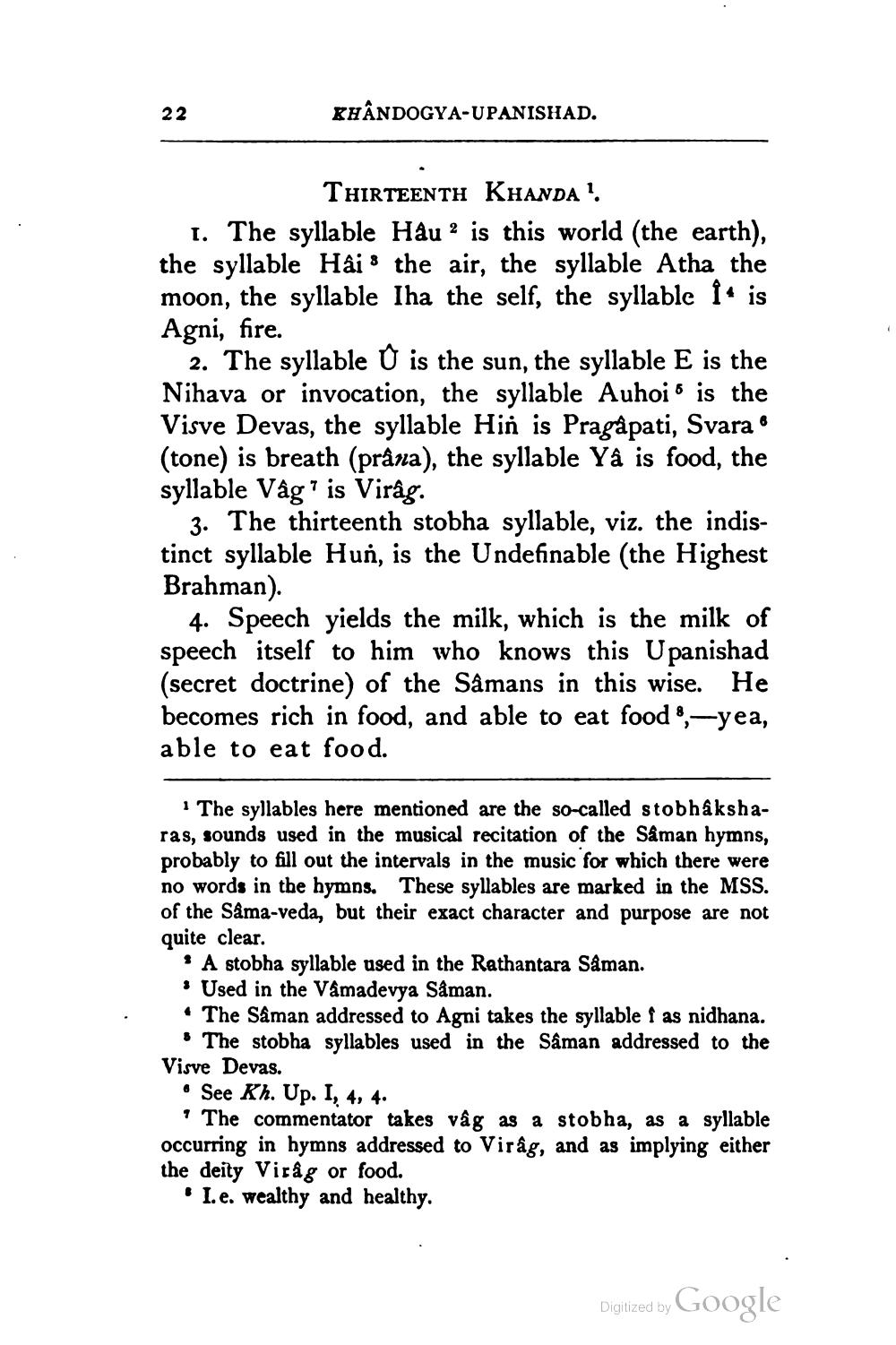________________
KHÂNDOGYA-UPANISHAD.
THIRTEENTH KHANDA !. 1. The syllable Hau? is this world (the earth), the syllable Hai 8 the air, the syllable Atha the moon, the syllable Iha the self, the syllable it is Agni, fire.
2. The syllable Ū is the sun, the syllable E is the Nihava or invocation, the syllable Auhoi 5 is the Visve Devas, the syllable Hin is Pragàpati, Svara (tone) is breath (prâna), the syllable Yå is food, the syllable Vâg? is Virág.
3. The thirteenth stobha syllable, viz. the indistinct syllable Hun, is the Undefinable (the Highest Brahman).
4. Speech yields the milk, which is the milk of speech itself to him who knows this Upanishad (secret doctrine) of the Samans in this wise. He becomes rich in food, and able to eat food ,-yea, able to eat food.
· The syllables here mentioned are the so-called stobháksharas, sounds used in the musical recitation of the Saman hymns, probably to fill out the intervals in the music for which there were no words in the hymns. These syllables are marked in the MSS. of the Sama-veda, but their exact character and purpose are not quite clear.
* A stobha syllable used in the Rathantara Såman. • Used in the Vamadevya Såman. • The Saman addressed to Agni takes the syllable i as nidhana.
. The stobha syllables used in the Saman addressed to the Visve Devas. • See Kh. Up. I, 4, 4.
The commentator takes våg as a stobha, as a syllable occurring in hymns addressed to Virâg, and as implying either the deity Viråg or food.
• I.e. wealthy and healthy.
Digitized by Google




